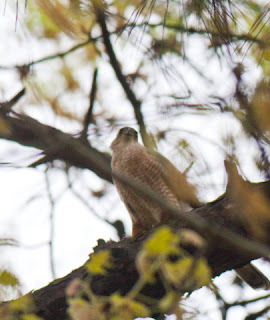Today for
Macro Monday, I decided to talk a little about the equipment that goes into making a macro photograph. The focus will be on what is reasonable for the typical amateur, like me, and not get into extremely specialized equipment or cameras larger than 35mm.
I'll start with clarifying a little terminology. While no precise definition exists for macro and close-up photography, macro is usually understood to be a photograph where the image projection on the film/sensor is at least as large as the actual subject (a 1:1 magnification). Close-up photos have smaller image sizes but are still subjectively close.
 |
Mushrooms in Shenandoah National Park; taken with
Canon 100mm macro lens |
The best option for making high quality macro images is a lens designed for macros. These types of lens are designed to have a maximum magnification of 1:1. Most DSLR manufactures have several options. The two major advantages macro lens have are that they can change focus for the nearest point (which gives the 1:1) to infinity without any modification to the lens. This makes them usable as a standard lens also. The second benefit is that the designers work to make sure that at the closest focus distance, the focal plane is flat. Normally, the region in focus is slightly curved. This is because the points that are equal distance from lens form a sphere and not a plane. But with sophisticated lens design, the focal plane can be flattened. If you are really into macro photography and will use the lens for macro more than about a third of the time, this is probably the lens for you.
 |
| Fungus; taken with Olympus Stylus 600 |
Many point and shoot cameras have a macro mode. This is a pretty good option if this is the type of camera you own. The major disadvantage is that the cameras usually have a large depth of field so you are not able to get the background well of of focus to make the subject jump out or to have selective focus on the subject. This is because point and shoot cameras have much shorter focal length lens than 35 mm or APS cameras do. The smaller sensor in these cameras allow the back of the lens to be closer to the sensor as the image circle from the lens is only as big as the sensor. This allows for a smaller focal length lens. For example, my Olympus Stylus 600 has a wide angle focal length of only 5.8 mm. But since the depth of field is inversely related to the focal length of the lens, this lens will make basically everything in focus. For comparison, a typical SLR macro lens is between 100 mm and 180 mm. But if you are willing to give up on having shallow depth of field, a point and shoot can make very good macro shots.
 |
Moon Flower; taken with Canon 15-85mm lens with
12mm extension tube |
The third option, and the one I use most often, is to add an extension tube to a regular lens. An extension tube is an empty spacer that is inserted between the back of the lens and the camera body for an interchangeable lens camera. By moving the lens further away from the sensor, the extension tube changes the focus range of the lens. This allows you to focus closer to the lens than before. And by getting closer, you increase the magnification. The main benefit of extension tubes is that you can do macro photography with just about any lens. And since the extension tubes are just spacers, there is no glass and very limited electronics, they are extremely light. The disadvantages are that the lens can not focus at infinity with the extension tube attached. So if you are mixing your subjects between close up and further away, you will need to keep taking the tube on and off. And since the tube makes the image circle on the sensor larger, in also makes it darker. For thinner tubes, it doesn't make much difference, but if you use a thick tube on a long lens you will lose a noticeable amount of light.
 |
Close-up of Palamedes Swallowtail; taken with Canon 400 mm lens
and 20mm extension tube. |
 |
Carolina Chickadee; taken with Canon 400 mm lens
and 12 mm extension tube from window. |
I use extensions tubes for a couple of reasons. First, my camera bag is already full and I really didn't want to carry around another lens just for macros since they are not yet a major part of my portfolio. The extra weight and space of a dedicated lens just wasn't worth it. Second, I can use the extension tube to let me focus closer with my 400mm and that's great. The Canon 400mm f/5.6 lens is a great wildlife lens but has a closest focus distance of about 14 ft. So I just add on a 12mm extension tube and can focus much closer which make those shots at the feeder all that much easier to get.
And finally, extension tubes are an inexpensive way to get into true macro photography. I bought a set of Kenko tubes that come in three sizes (plus they can be stacked) for a little over $100. And don't worry about getting name brand tubes. As was pointed out in one review I read, "the cheaper ones have the same 'low dispersion' air as the manufacturer's." Just make sure there are not a lot of complaints about the autofocus not working. If the electronics are not well designed, autofocus might not work. But otherwise, there really is no reason to pay for the name brand extension tubes.

















